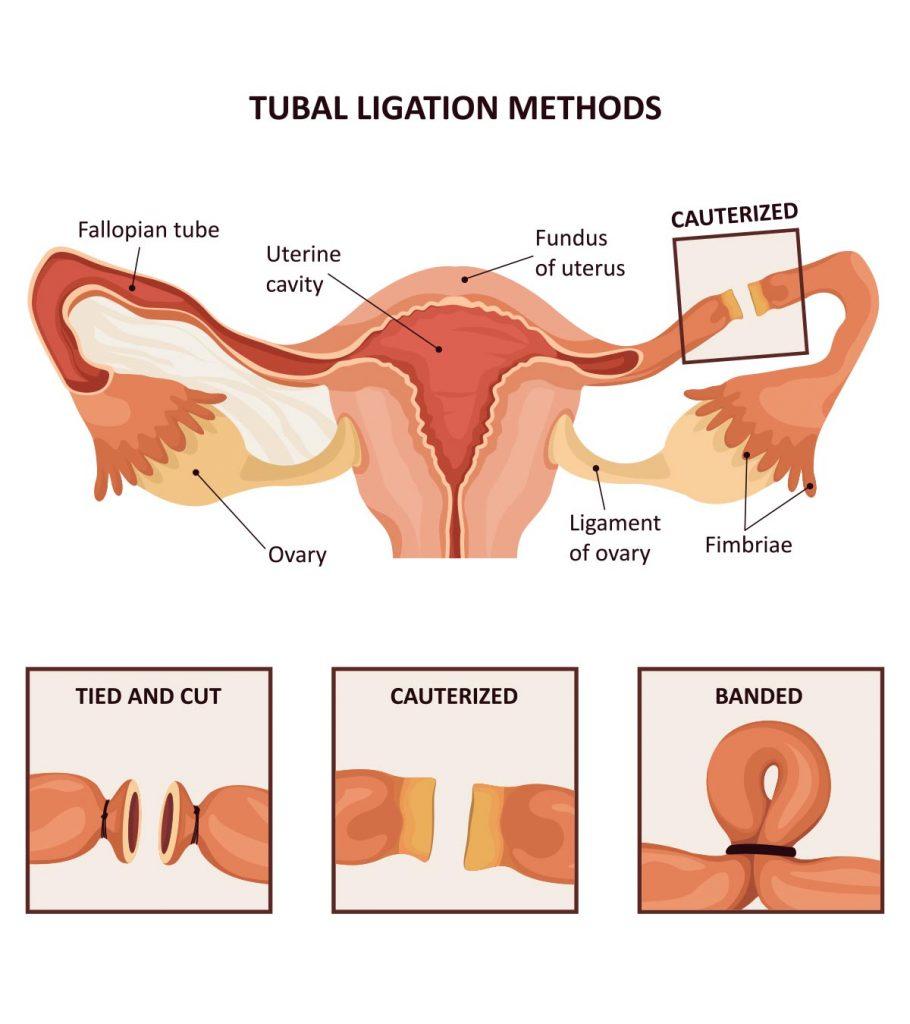Blocking the fallopian tubes to prevent sperm from reaching the egg. Different type of tubal ligation.
 Tubal Ligation Benefits Risks And Alternatives
Tubal Ligation Benefits Risks And Alternatives
Another less common tubal ligation surgery is known a fimbriectomy.

Different types of tubal ligation. Tubal ligation-- also known as having your tubes tied -- is a kind of surgery that will keep you from ever getting pregnantIf youre thinking about having it done its important to understand. This article looks at the purpose procedure types risks alternatives and recovery. A tubal ligation with clips is commonly performed through a laparoscopic surgery.
Increased risk of disease pyometra and infections does not reduce problem behaviors. It is usually done at the time of a Cesarean Section or the day after a normal vaginal delivery. One or two small incisions cuts are made in the abdomen at the navel and a device similar to a small telescope on a flexible tube called a laparoscope is inserted.
The surgeon usually holds a loop of fallopian tube with special tubal forceps and then makes about a two- to four-centimeter loop of tube that he or she ties with suture. This procedure may not cause as much damage to the tissue of the fallopian tubes as some other types of tubal ligation. During a Pomeroy tubal ligation a small loop is tied in the middle of the fallopian tube and stitched in place.
Bipolar Monopolar Cautery Ligation. Tubal ligation can be done in a variety of ways. The most popular method of laparoscopic female sterilization this method uses electrical current.
The first more traditional is to surgically clip the tubes tying each end so fertilization cannot occur. By removing a portion of the fallopian tube closest to the ovary fimbriectomy eliminates. A tubal ligation with clips like a standard tubal ligation is considered a permanent method of birth control but it can be reversed in some cases.
This common type of tubal ligation is also called the post-partum tubal ligation. An open ligation also known as a laparotomy is performed by making a fairly large incision into the abdomen often in tandem with some other abdominal surgery such as a cesarean section. Types of Tubal Ligation Bipolar Coagulation.
How Your Tubes Might Be Tied. There are two ways of doing this. 1 doctor answer 5 doctors weighed in.
Still another choice of tubal ligation procedures is to have the surgery performed immediately following a C-section. This procedure involves removing the fimbria and the infundibulum. The top of this loop is then cut off and stitched shut to keep it from bleeding.
This procedure is commonly done to prevent pregnancy by tying the tubes enable pregnancy by correcting adhesions treat severe infections and as part of the treatment for ovarian cancer. A laparoscopic abdominal tubal ligation is the most common among the various tubal ligation procedures. Is usually performed following delivery in the postpartum period via a small subumbilical incision.
The surgeon will make one or more incisions into your abdomen. Theyll find your fallopian tubes and block that passageway. A knuckle of the tube is.
Fallopian tube surgery is a procedure performed on the tube connecting the ovary to the uterus. Tubal ligation is a form of female sterilization. Family Medicine 19 years experience.
Tubal ligation is done in a hospital or outpatient surgical clinic while the patient is asleep given anesthesia. A newer way is to insert a coil. Less invasive Disadvantages.
Hulka or Filshie Clip Ligation. The uterus and ovaries stay intact. Bilateral tubal ligation BTL Tubal ligation also known as tubal occlusion or having your tubes tied is a surgery only prescribed for the purpose of sterilization.
